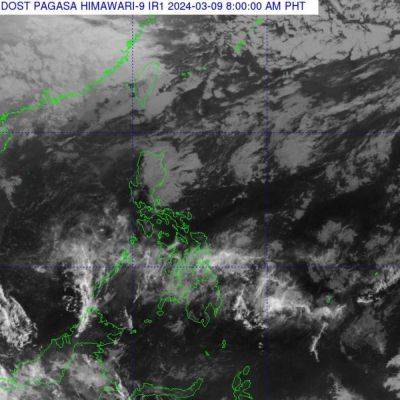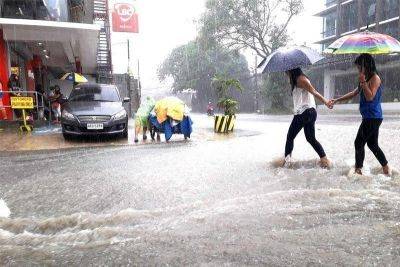No weather disturbance in next 2 weeks – PAGASA
MANILA, Philippines — No weather disturbance is expected in any part of the country in the next two weeks, according to the Philippine Atmospheric, Geophysical and Astronomical Services Administration.
Ana Solis, officer-in-charge of the PAGASA Climatology and Agrometeorology Division, said there would be minimal rainfall over parts of the country due to different weather systems.
However, there will be no low-pressure area or tropical cyclone until March.
“There are the easterlies and isolated local rains or thunderstorm activities, but minimal. Other than those, we don’t see any weather disturbance in the next two weeks,” Solis said.
Hotter weather is expected with the entrance of March, as the northeast monsoon or amihan continues to weaken and will terminate before March 21, based on PAGASA monitoring.
“Last year, amihan terminated on March 21. (It will be) earlier than March 21 (for this year) compared to last year’s,” Solis said.
PAGASA warned of a hotter warm and dry season next month amid the El Niño.
Almost all provinces in the country will experience the adverse effects of El Niño at its peak impact by May, with varying levels of impact in the next few months, according to Solis.
“More than 80 provinces would possibly be affected by the El Niño, which could lead to dry condition, dry spell or drought,” she said.
As of the end of January, 41 provinces have already experienced such impacts.
Meteorological drought may be seen in 41 out of the 82 provinces, characterized by below normal rainfall conditions or 21 percent to 60 percent reduction from average for five consecutive months or way below normal rainfall conditions for three consecutive months.
The strong or mature El Niño has already started to decay, but the sectoral impacts will be seen in the March-April-May season.
Solis warned vulnerable sectors to keep an eye on their health amid the hot temperatures.







